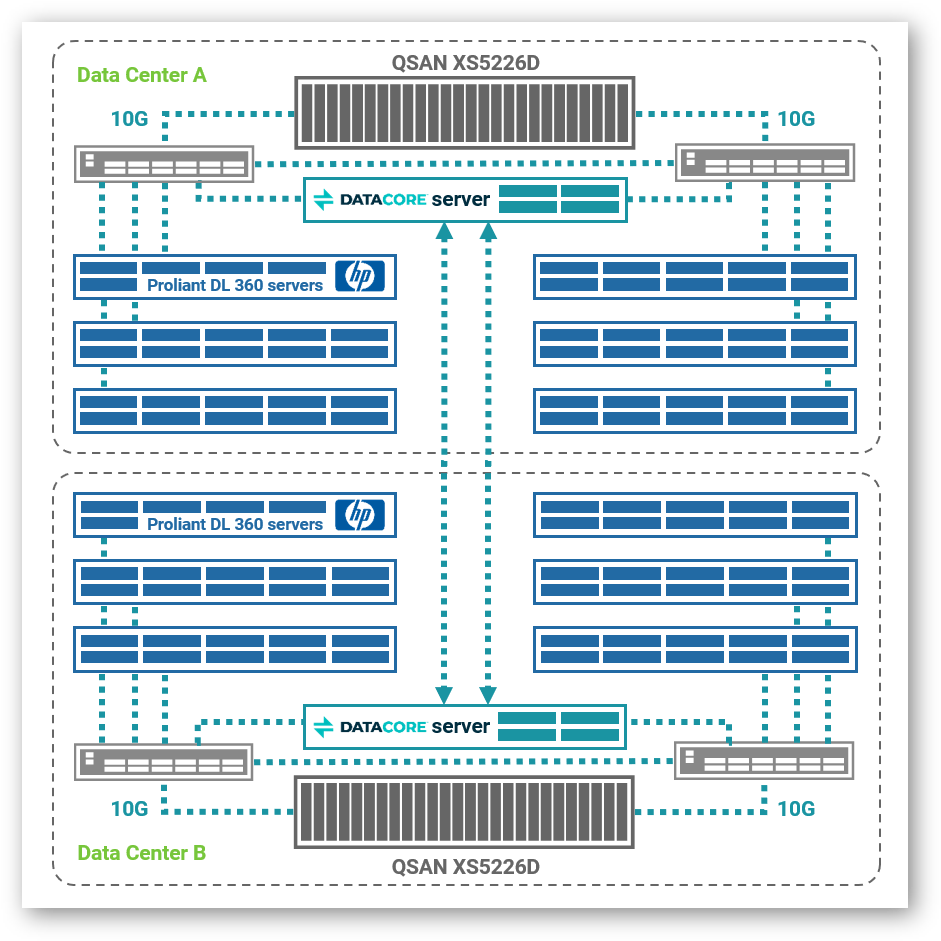By enabling businesses to communicate with their customers and each other, and local and states governments to serve citizens. the MD-based public utility provides telephony, highspeed Internet and data connectivity services, website and managed server hosting, and collocation data-center services. Relying on an 4 terabit-per-second fiber backbone, the enterprise prides itself on the high-availability of its many services, achieving this goal, in part, by operating a redundant second datacenter.
Providing businesses and governments with critical functionality like voice and Internet services demands reliable, high-speed storage. This internet service provider operates a variety of applications and databases like MS SQL server, MySQL, and Postscript databases in virtual machines (VMs) to store customer data records and track customer usage for billing. Moreover, business intelligence is applied to its data streams, furthering the need for fast storage. For example, it delivers intelligent call routing to determine the optimal paths for the best rates for local, long-distance, and international calls. The enterprise also applies sophisticated analytics to detect fraud and prevent costly hacking.
“Our systems scan thousands of calls daily to determine if there’s suspicious activity that could compromise our customers’ communications,” said the CIO. “We need storage with very high throughput to analyze torrents of data and look for patterns that indicate malicious behaviors.”
However, it was relying on storage solutions with traditional spinning disks. “Our spindle-based SAN couldn’t deliver the in/out performance that we required going forward. It was also at the end of its lifecycle when disks start to fail. We needed a robust storage upgrade at both of our datacenters.”

The QSAN Flash Arrays was installed into similar environments at its two datacenters. Each 2U device was initially provisioned with 12 1.9TB SSDs and then fully populated with 26 SSDs, providing 49TBs of capacity. Each QSAN array houses 22 terabytes of data.
The QSAN platforms have redundant 10Gb iSCSI links to a pair of Juniper Ex4550 switches at the data centers. The switches at each site connect to HP Proliant DL 360 servers through 10Gb connections. Additionally, the switches each site connect to a server running the DataCore SANsymphony-V storage virtualization solution.
The QSAN platforms with the flash drives provide greater throughput over the enterprise’s legacy spinning disks, resulting in better and more consistent performance. Latency dropped from 18–20 milliseconds on average on the spindles to sub-five milliseconds on the QSAN flash platforms.
“We now can handle large volumes of requests and data more consistently,” said the CIO. “Additionally, our applications are more responsive as wait times are much reduced. There’s simply no comparison between our legacy spinning disks and our flash drives.”
This ISP protects its business information by replicating data between its two QSAN platforms, and redundant links further ensure availability. The QSAN chassis also provides safeguards such as dual-active controllers, maximizing utilization of system resources. With multiple interfaces into the environment, each controller can seamlessly assume all services if the other fails.
We’re here to help you find the best, most cost‑effective solution for your business.
Join the Future of Storage Tech – Subscribe in Seconds!